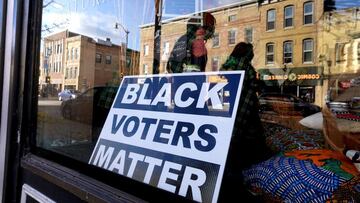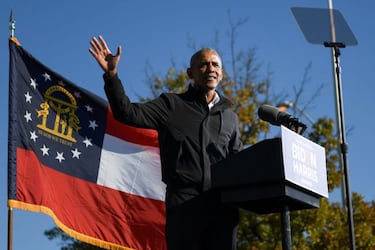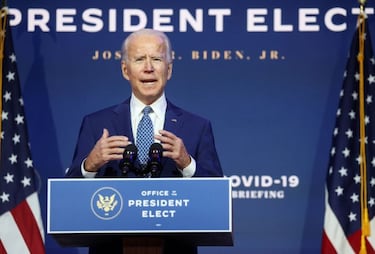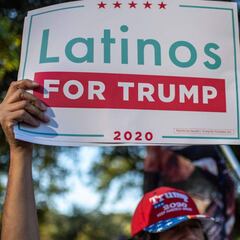US election 2020 results: who received more Black votes?
Estimates for the 2020 US presidential elections point to an historic turnout overall but the demographics remain unclear as votes continue to be counted.

A record-breaking US presidential election is slowly drawing to close. Joe Biden has been declared president-elect after winning 279 electoral votes to Donald Trump’s 214 with 95 percent of the count completed. Already turnout has smashed recent election years, with almost 150 million ballots cast and both candidates beating the previous high-water mark for a US presidential candidate set by Barack Obama in 2008 when the Democrat gained 69.5 million votes.
According to estimates from the Washington Post and Edison Research, voter turnout in 2020 could reach levels not seen since the 1900 elections when 73.7 percent of eligible voters went to the polls (the highest-ever turnout of 82.6 percent, set in 1876, is unlikely to be troubled).
Obama elected in most diverse US election to date

The presidential contest between Barack Obama and John McCain in 2008 was the most diverse in US history, with almost a quarter of ballots cast by non-white voters, according to the Pew Research Center. Of these, 19.5 percent were Black and Hispanic voters with Asians accounting for 2.5 percent. Black voter turnout increased by 4.9 percent over 2004 with Hispanic voters increasing by 2.7 percent.
Obama accrued 95 percent of the Black vote, which counted for 12.1 percent of the 2008 total, with the president eventually winning the popular vote by almost 10 million ballots.
The incumbent Obama ran against Mitt Romney in 2012. Hispanic voters helped to usher in another four-year term for Obama with 71 percent voting for the sitting president, a four percent increase on 2008 and the largest share of the Hispanic vote for a Democratic candidate since 1996.
Black voters again backed Obama en masse in 2012 with the president gaining 93 percent, representing a total of around 13 percent of the overall ballot.
Although a new record was set in 2012 when 137.5 million Americans went to the polls, Black turnout fell for the first time in 20 years after reaching an historic high of 66.6 percent four years earlier.
Trump reduces non-white Democratic vote in 2016

Donald Trump was elected in 2016 after shaving seven points off Obama’s advantage among Black and African-American voters from four years earlier and eight points from the 2012 Hispanic Democrat vote, where there was little change in overall turnout.
That trend continued this year with Trump increasing his share of the Hispanic vote by a third. However, Biden improved on Clinton’s record among non-college educated white voters with a four-percent swing. Trump performed well again among the Hispanic constituency especially in Florida and Texas, with an estimated eight-percent shift towards the Republican over 2016. However, this demographic also played a pivotal role in the outcome of the 2020 elections, helping Biden to turn the tide in Arizona.
Biden projected to take 90 percent of Black vote

An amalgamation of 2020 exit polls compiled by the FT suggests that Biden gained around 90 percent of the Black vote but it remains unclear whether turnout was significantly higher than in previous election years, largely because of the huge number of early and mail-in ballots.
What it known is that overall turnout in 2020 looks set for an historic high with 16 percent more votes cast nationally than in 2016. In Georgia, a key state that Biden is on the verge of winning, there was a 21 percent rise in voter turnout due in no small part to the efforts of Stacey Abrams.
The Abrams effect
Georgia, thank you. Together, we have changed the course of our state for the better. But our work is not done.
— Stacey Abrams (@staceyabrams) November 7, 2020
Join me in supporting @ReverendWarnock and @ossoff so we can keep up the fight and win the U.S. Senate➡️https://t.co/JTyH1UVEtd #LetsGetItDoneAgain #gapol pic.twitter.com/qH5ZfmsgI7
Abrams, 46, a lawyer, entrepreneur, romance novelist and Georgia politician, became a national Democratic figurehead after losing a hard-fought governor's race in 2018 by just 55,000 votes. Now she is being lauded by Democrats, academics, voters and activists around the country for boosting Biden to victory.
Related stories
Georgia last voted for a Democratic president in 1992, and Biden's lead in the state, as the last ballots are being counted, is just 10,000 votes. While the state is headed to a recount, that isn't expected to change the results dramatically.
Years of get-out-the-vote efforts spearheaded by Abrams and a legal onslaught against voter suppression from legions of community groups and activists, are behind the Democratic shift, experts say.

